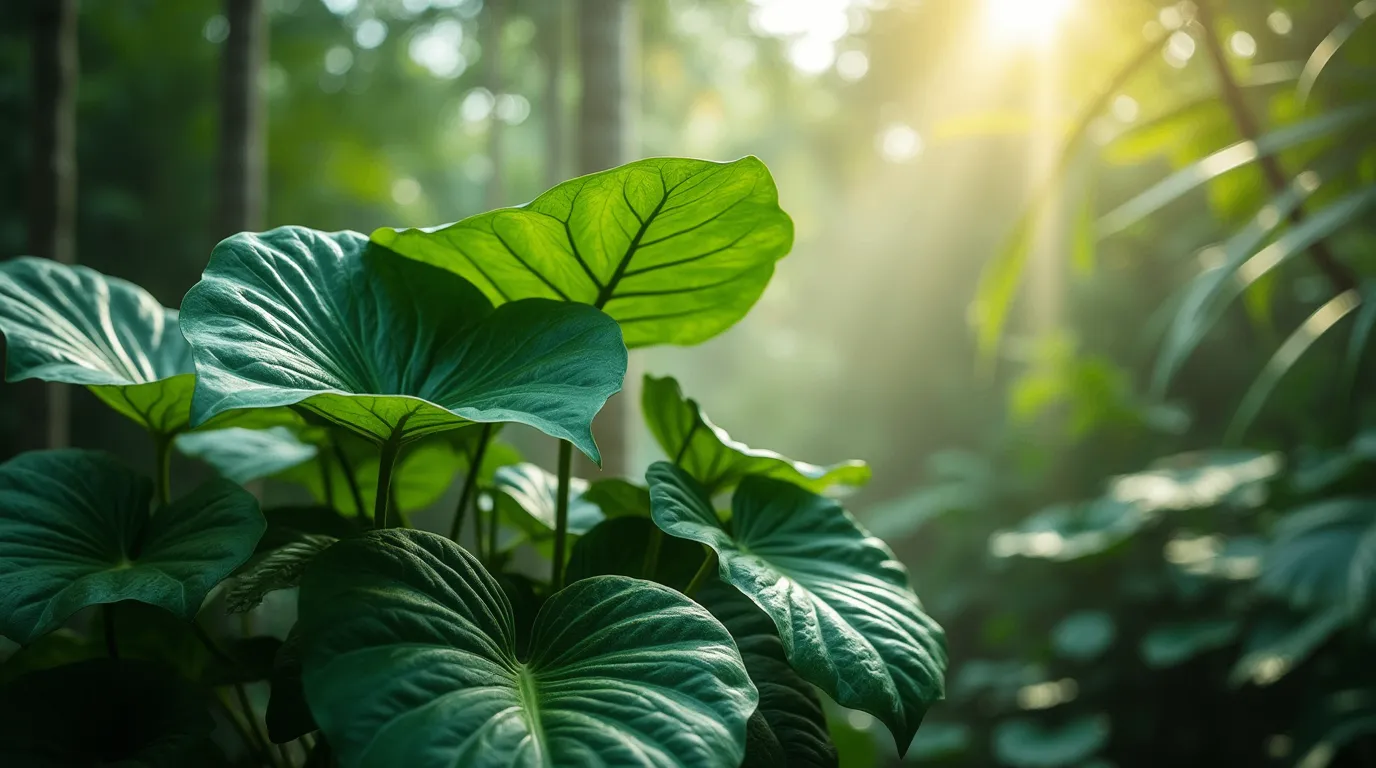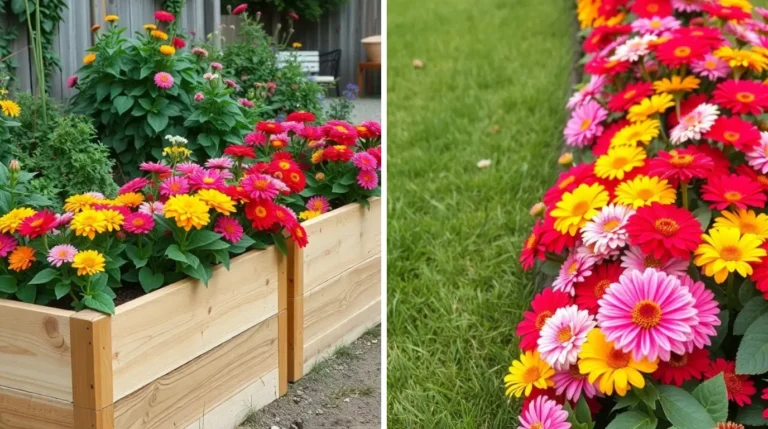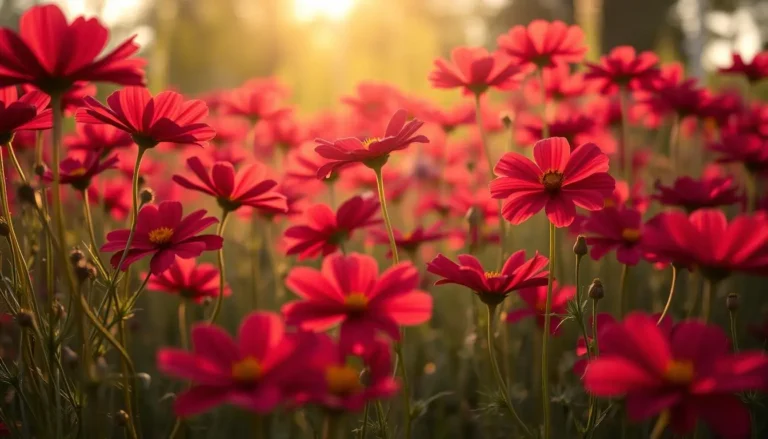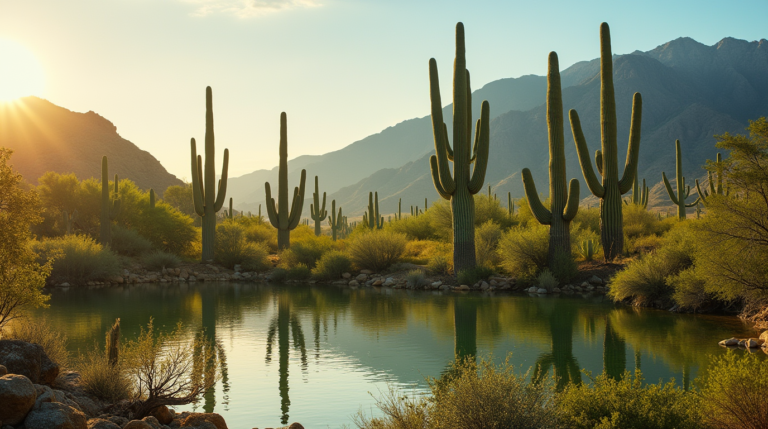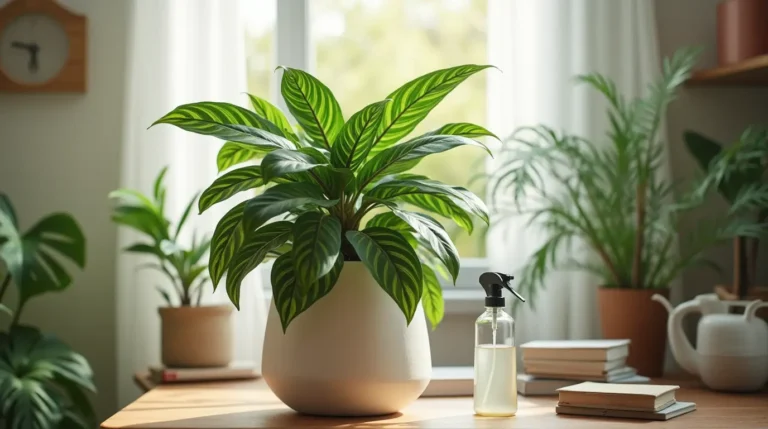Elephant Ear Plants: How To Grow And Care For Them Successfully
Table of Contents
Elephant ear plants, known for their large, dramatic foliage, can transform any garden into a tropical paradise. These striking plants, belonging to the genera Colocasia, Alocasia, and Xanthosoma, are favored by garden enthusiasts for their impressive leaves and ease of care. Cultivating these lush beauties requires understanding their specific needs, from soil and water requirements to sunlight and temperature preferences. In this guide, we will provide comprehensive insights into growing and caring for elephant ear plants, ensuring your garden thrives with these magnificent additions. Prepare to delve into the world of elephant ears and elevate your gardening experience.
Introduction to Elephant Ear Plants

Unique Characteristics
Elephant ear plants are renowned for their distinct, oversized leaves, which can reach up to three feet in length. These leaves often have a glossy texture and come in various shades of green, purple, and even black. The veins on the leaves are usually pronounced, adding to the plant’s dramatic appearance. Beyond their striking foliage, elephant ear plants also exhibit a unique growth pattern. They primarily grow from corms, which are underground storage organs similar to bulbs. When planted, these corms quickly produce shoots that develop into the impressive leaves we admire. Additionally, some species of elephant ears produce fascinating flowers, though they are less common and often overshadowed by the plant’s foliage. These characteristics make elephant ear plants a captivating addition to any garden, providing both visual interest and a touch of the exotic.
Popular Varieties
Elephant ear plants come in several popular varieties, each offering unique attributes to suit different garden aesthetics. The Colocasia genus, often known as taro, includes varieties like Colocasia esculenta, known for its heart-shaped green leaves and edible corms. Another favorite is Colocasia ‘Black Magic,’ which features deep purple, almost black leaves that add dramatic contrast to garden settings.
Alocasia varieties, such as Alocasia amazonica, also called the African Mask plant, have striking arrowhead-shaped leaves with prominent white veins. Alocasia macrorrhiza, or Giant Taro, is celebrated for its massive leaves that can dominate any landscape.
Xanthosoma varieties, like Xanthosoma sagittifolium, often referred to as Arrowleaf Elephant Ear, have arrowhead-shaped leaves and are prized for their rapid growth and resilience.
These popular varieties ensure that gardeners can find an elephant ear plant that perfectly complements their garden’s style and growing conditions.
Ideal Growing Conditions
Elephant ear plants thrive in environments that mimic their native tropical habitats. They prefer rich, well-draining soil with plenty of organic matter to support their vigorous growth. Moisture is crucial for these plants, so ensure the soil stays consistently damp but not waterlogged. A location offering partial to full sunlight is ideal; however, in extremely hot climates, some afternoon shade can prevent leaf scorch.
Temperature plays a vital role in the health of elephant ear plants. They flourish in warm conditions, ideally between 65°F and 75°F. These plants are sensitive to frost, so they should be planted outdoors only when the danger of frost has passed. In cooler climates, they can be grown in containers and brought indoors during the colder months.
By providing the right growing conditions, you can ensure that your elephant ear plants will develop their characteristic large, lush leaves, transforming your garden into a tropical oasis.
Planting and Growing Tips
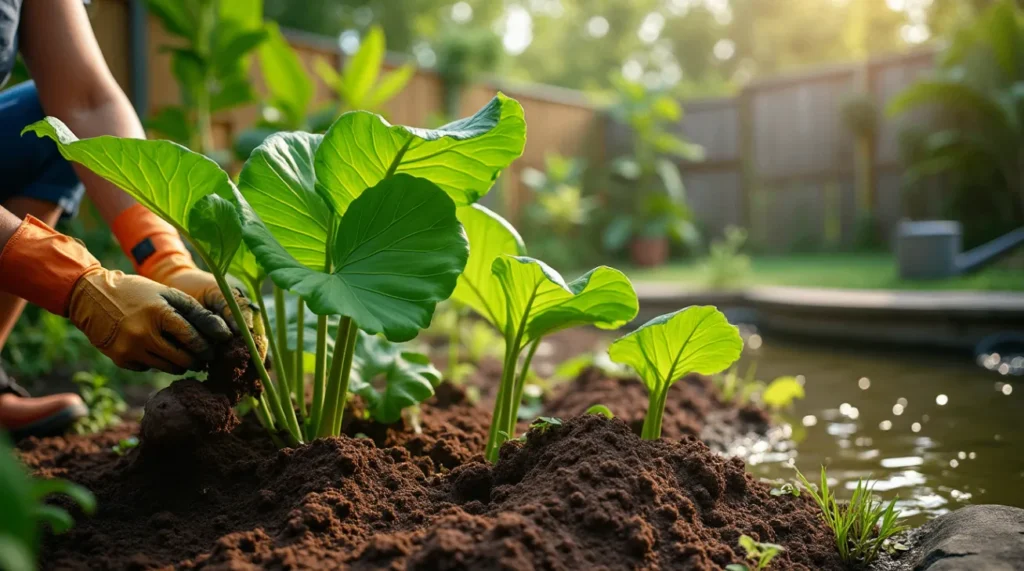
Soil and Light Requirements
For optimal growth, elephant ear plants require rich, well-draining soil. A loamy soil mixed with organic matter such as compost or well-rotted manure provides the nutrients necessary for these plants to thrive. The soil should retain moisture but also allow excess water to drain away, preventing root rot.
When it comes to light, elephant ear plants are quite adaptable. They can grow in both full sun and partial shade. However, in regions with intense sunlight, providing some afternoon shade can protect the leaves from scorching. If grown in full shade, the plants may become leggy and less robust.
Monitoring the soil’s moisture levels and ensuring adequate light will promote healthy growth and vibrant foliage. Whether planted in garden beds or containers, fulfilling these soil and light requirements is key to cultivating lush, impressive elephant ear plants.
Watering Guidelines
Proper watering is crucial for the health of elephant ear plants. These tropical beauties thrive in consistently moist soil, but it’s essential to avoid waterlogging, which can lead to root rot. During the growing season, water your plants deeply and regularly to keep the soil evenly damp. In hot weather, it’s important to water more often to prevent the soil from drying out.
Elephant ear plants also appreciate high humidity, so if you live in a dry climate, consider misting the leaves or placing a humidity tray nearby. When watering, focus on the soil rather than the foliage to prevent fungal issues.
In the dormant season, typically during cooler months, reduce the watering frequency. Allow the soil to dry out slightly between waterings, as the plants’ growth slows down and their water needs decrease. By following these watering guidelines, you can keep your elephant ear plants healthy and thriving year-round.
Fertilization Techniques
Fertilization is key to supporting the vigorous growth of elephant ear plants. These nutrient-hungry plants benefit from regular feeding during the growing season. Use a balanced, water-soluble fertilizer with an equal ratio of nitrogen, phosphorus, and potassium (such as a 20-20-20 formula). Apply the fertilizer every two to three weeks to ensure continuous nutrient supply.
For organic gardeners, compost tea or a fish emulsion can serve as excellent natural fertilizers. Incorporating well-rotted manure or compost into the soil at the beginning of the planting season can also provide a slow-release nutrient source.
It’s important to avoid over-fertilizing, as this can lead to excessive foliage growth at the expense of root development and overall plant health. Always follow the manufacturer’s instructions for application rates and frequency. By adhering to these fertilization techniques, you can promote lush, healthy growth and vibrant foliage in your elephant ear plants.
Care and Maintenance
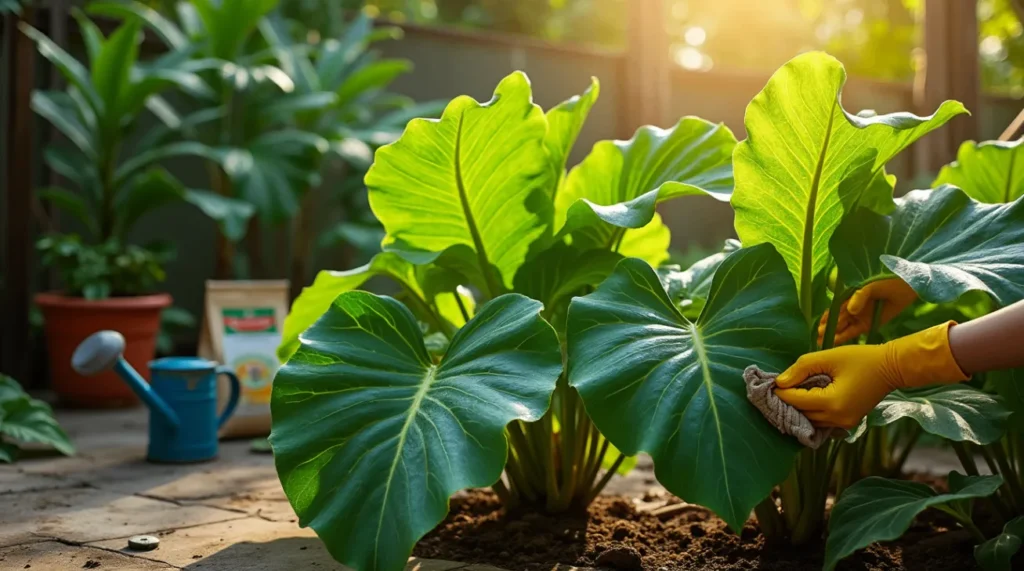
Pruning and Trimming
Pruning and trimming elephant ear plants are essential for maintaining their health and appearance. Regularly removing dead or yellowing leaves helps to prevent disease and pest infestations while promoting new growth. Use clean, sharp pruning shears to make clean cuts at the base of the leaf stem.
Trimming also allows you to control the size and shape of your plant. If your elephant ear is becoming too large or leggy, selectively remove some of the older, outer leaves to encourage a more compact growth habit. Be cautious not to remove more than one-third of the plant’s foliage at a time, as this can stress the plant.
Additionally, removing spent flowers can help direct the plant’s energy back into foliage production. By incorporating regular pruning and trimming into your care routine, you can ensure that your elephant ear plants remain healthy, vigorous, and aesthetically pleasing.
Managing Pests and Diseases
Managing pests and diseases is crucial for maintaining the health of elephant ear plants. Common pests include aphids, spider mites, and caterpillars, which can damage the leaves and stunt growth. Regularly inspect your plants for signs of infestation, such as discolored or distorted leaves. If pests are detected, you can use insecticidal soap or neem oil to control them effectively.
Diseases such as root rot and leaf blight can also impact elephant ears. To prevent root rot, ensure your plants have adequate drainage and avoid overwatering. For leaf blight, promptly remove and dispose of affected leaves to prevent the disease from spreading. In severe cases, the use of fungicides may be required.
Maintaining good hygiene, such as sterilizing pruning tools and removing plant debris, can help prevent many problems. By staying vigilant and addressing issues promptly, you can keep your elephant ear plants healthy and thriving.
Seasonal Care Tips
Seasonal care is essential for elephant ear plants, particularly in regions with varying climates. During the growing season, typically spring through summer, focus on providing ample water, sunlight, and nutrients. Regularly check soil moisture and adjust watering frequency to keep the soil consistently damp.
As temperatures begin to drop in the fall, start reducing water and fertilizer to prepare the plants for dormancy. In cooler climates, consider digging up the corms before the first frost. Clean and dry the corms, then store them in a cool, dry place until the next planting season.
In warmer regions, where elephant ear plants can remain outdoors year-round, protect them from occasional cold snaps by covering them with frost cloth or mulch. This helps to insulate the roots and prevent damage.
By adapting your care routine to the changing seasons, you can ensure that your elephant ear plants remain healthy and vibrant throughout the year.

